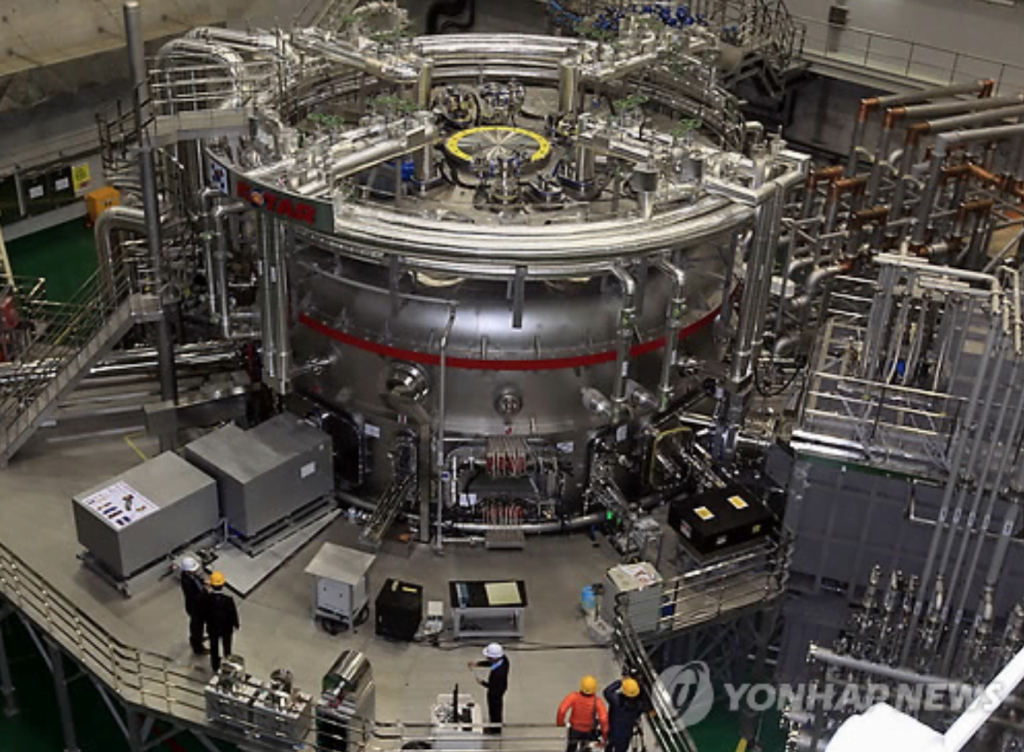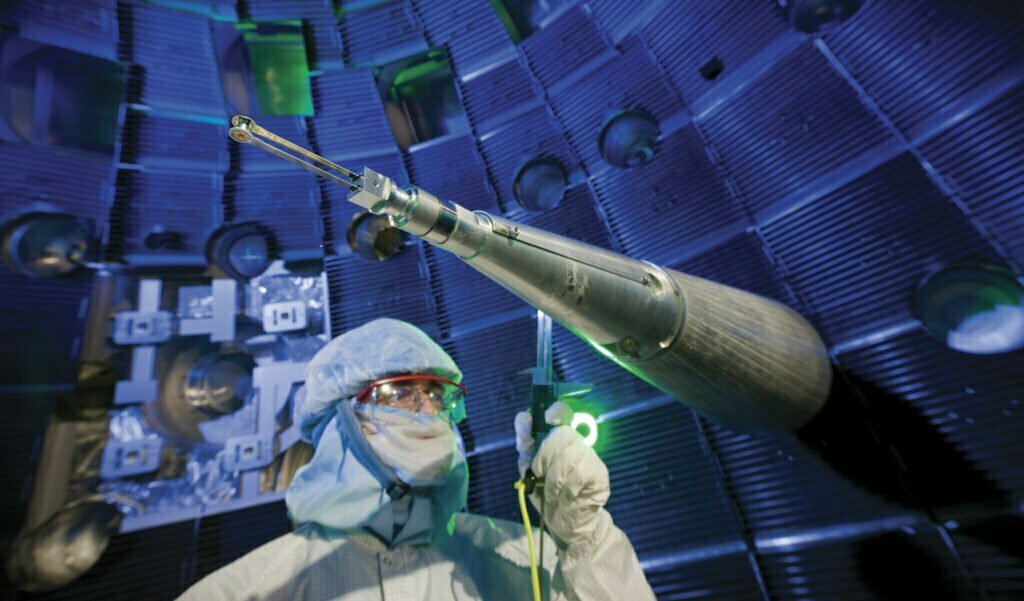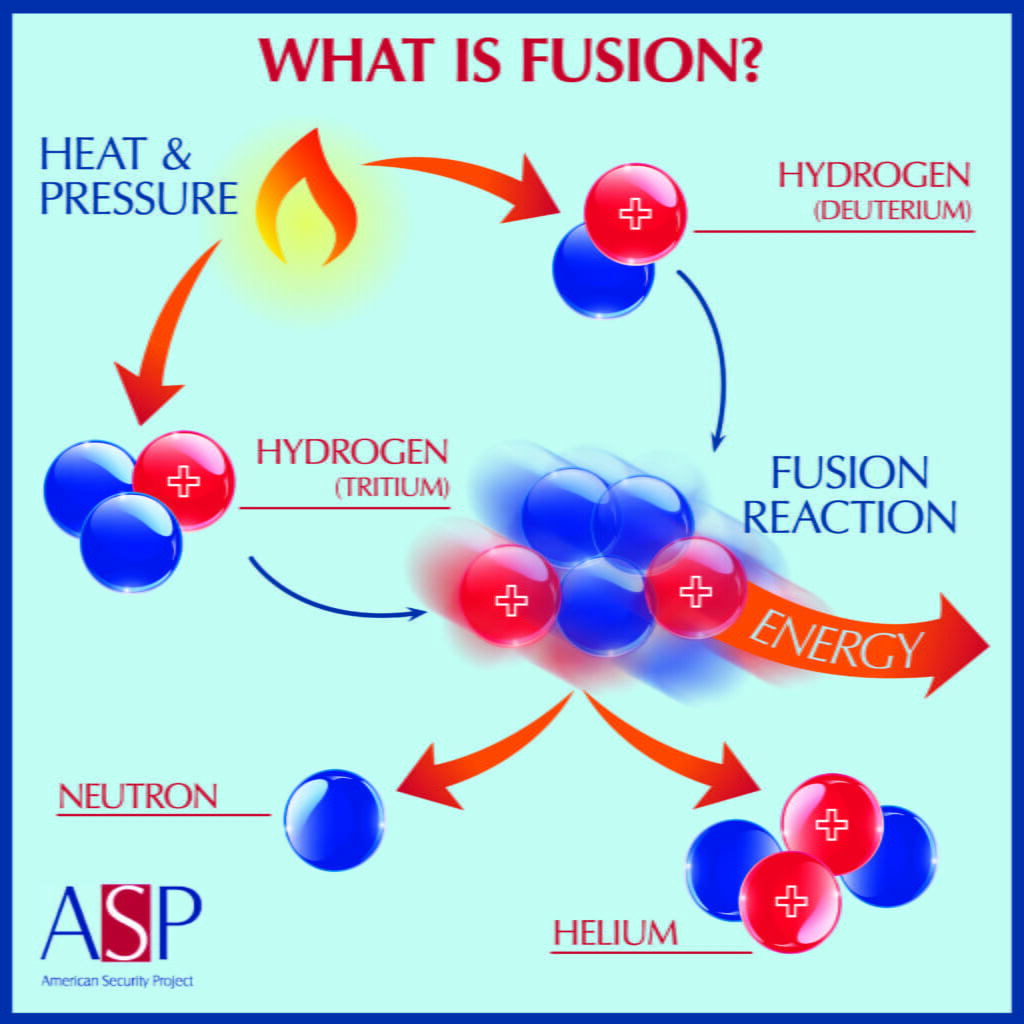With a powerful zap from nearly 200 laser beams that lasted less than 9 billionth of a second, scientists in Northern California believe they have achieved a major milestone in their research to advance nuclear fusion. News of the new experiment has circulated quickly around the scientific community and stirred optimism that hydrogen fusion may someday provide an abundant and clean source of energy around the globe. “People have been working at this for decades trying to achieve this,” said Annie Kritcher, a physicist at the Lawrence Livermore National Laboratory and the lead designer for the experiment. “I think it has extremely energized the whole community.” The San Diego-based energy and defense company General Atomics assisted in the laser shot on Aug. 8. “This experiment is the proof of principle, that this can be done with enough control in a laboratory setting,” said Mike Farrell, vice president for Inertial Fusion Technology at General Atomics. “We have moved out of theory and into demonstration that it can be done. There’s still a lot of work to do to make it a reproducible process, but it’s moved out of the realm of science fiction.”
The experiment was conducted at Livermore’s National Ignition Facility, a site about the size of about three football fields that houses 192 immense lasers. The target was a gold-uranium cylinder about the size of a pencil eraser. The lasers vaporized the gold, which generated X-rays that heated a pellet of hydrogen the size of a BB. The burst of energy threw off more than 10 quadrillion watts of fusion power — about 700 times the generating capacity of the country’s electrical grid at a given moment. What’s more, the heat from the particles flowing from the pellet caused the hydrogen atoms to fuse, leading scientists to believe the fusion reactions were self-sustaining. “We created a burn wave,” Kritcher said. The results were 25 times greater than three years ago and eight times better than experiments conducted earlier in the spring. One physicist on the project took to Twitter and said the energy output in the August experiment was about 1,000 times higher than what was recorded 10 years ago.

It’s crucial for the implosion to generate more energy than the amount used to power the lasers; until then, it would be a losing proposition to pursue fusion as a power source. That point was not reached in August 2021, but the burst of energy was much larger than previous experiments — with 70 percent of the laser energy hitting the target — and lab officials are optimistic those numbers will keep improving. “It’s quite a bit more output than before and more self-sustaining,” Krticher said. Usually, details are kept under wraps until they get published and peer-reviewed but lab officials said they made the announcement because news of the experiment was spreading fast. Krticher said she is “very confident” that repeat experiments in the coming months will achieve consistent results. Even skeptics were impressed. “I am surprised,” Stephen Bodner, a retired plasma physicist and longtime critic of the National Ignition Facility, told the New York Times. “They have come close enough to their goal of ignition and break-even to call it a success … It demonstrates to the skeptic that there is nothing fundamentally wrong with the laser fusion concept.”

Picture: Lawrence Livermore National Laboratory
Nuclear fusion is different from the nuclear fission process seen at commercial nuclear power plants, such as the now-shuttered San Onofre Nuclear Generating Station. While fission splits the nuclei of atoms to create power, fusion causes hydrogen nuclei to collide and fuse into helium atoms that release tremendous amounts of energy. Nuclear fusion led to the development of the hydrogen bomb and since the 1950s, scientists and researchers have searched for a way to use fusion as a source of electricity. Proponents believe fusion could be an ideal energy source since the deuterium fuel needed is readily available from seawater and its only byproduct would be helium. Fusion emits no greenhouse gases.
Technicians from General Atomics selected and prepared the pellet and the company also fabricated two pieces of equipment used during the Livermore experiment. The results have has inspired thoughts of what a successful commercial application of fusion energy could mean for humanity. “If you can get to seawater, you can basically distill the necessary elements for a fusion reaction,” Farrell said. “And you would assume if these power plants were then available around the globe, you would not have an energy crisis in any way. And development in poorer regions would then be possible.” While the news from Livermore is encouraging, it’s not as though an era of futuristic, clean-burning nuclear fusion power plants is just around the corner. No commercial fusion plant has ever been built and fusion power has been generated only for short periods of time in research facilities.
Physicist Arthur Turrell, who just authored a book called “The Star Builders: Nuclear Fusion and the Race to Power the Planet,” called the August experiment a landmark, moving nuclear fusion from concept into something more tangible. “There’s a big road to go between demonstrating that your facility can produce more energy than it uses and going to commercialization and that’s because commercialization brings with it all kinds of other challenges,” Turrell said. He said it’s time to retire the long-running verbal jibe about fusion energy — that it’s always 30 years away. “Like any technological progress, it just depends how much investment we’re willing to put into it, how much effort,” Turrell said. “It’s not just a timer that we set off and we just wait for it to happen. This is something that will go faster if the world wants it to go faster and wants to spend more money on it.”
Interestingly, the central mission of the National Ignition Facility is not concerned with developing energy sources but nuclear weapons research. When the U.S. banned underground nuclear testing in 1992, government energy officials proposed using the facility as part of a larger program to verify the reliability of the country’s nuclear weapons stockpile without detonating any of them. Despite the impressive results in the experiment, lasers at the National Ignition Facility are not considered practical for use someday at a nuclear fusion power plant because several hydrogen pellets per second would be need be vaporized on a commercial scale, a pace the lasers could not sustain.
Instead, someday producing energy by way of super-powerful magnets — that would see an intensely hot, energy-producing plasma that could be steered and shaped — is considered a more promising route. One of the best-known projects using such magnetic confinement is the international ITER facility, an ambitious fusion megaproject under construction in southern France. General Atomics is playing a key role in the project. A coalition of 35 nations including the U.S. is contributing components and expertise to ITER and one of its key components — called the Central Solenoid — is being shipped in segments from General Atomics to the town of Cadarche, France. The first 110-ton module completed its San Diego-to-France crossing on Sept. 13, with six more shipments coming in regular intervals through the 2023. ITER will not be an operating nuclear fusion plant. Rather, its goal is to pave the way for the development of facilities that would use fusion to generate electricity. Despite some cost overruns, ITER is expected to to initiate “first plasma” in 2025.



